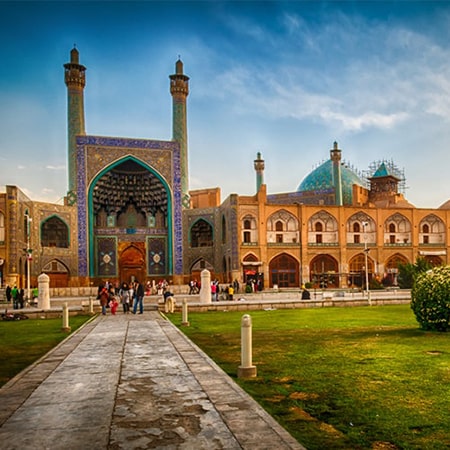
Isfahan
Isfahan is a monumental city filled with history, authentic Safavid architecture, Iranian engineering, vast gardens, palaces, mosques and glorious minarets. Perhaps this is why this city is called “Half of the world” in Iranian culture.
In terms of survey and population, Isfahan is third after Tehran and Mashhad. It was the capital of Iran during the Safavid era and since Iranian architecture reached its peak at that era, its remains are visible throughout the city. A lot of these historical monuments have been internationally submitted in UNESCO.
Isfahan is located at the center of Iran in a semi-wasteland area and has a temperate and dry climate.
History
Throughout history, it is not easy to follow the city of Isfahan. Although Isfahan was in the center of Iran’s plateau. Due to the fact that in the pre-Islamic period, the Achaemenes Empire to Sassanian Empire was the dominant territory of these empires, and especially the Mesopotamia, this city was not the focus of these dynasties. Throughout the history of the Islamic era, in the current location of the city of Isfahan, different cities under various names, different places and even different peoples were pursued.
The construction of Isfahan has been attributed to Tahmouris, the third king of the Pishdadian dynasty. This city has also been the main intersection of the main roads and royal residence of the Achaemenid kings. The Greek geographer Strabun has named Isfahan as the center of the country. When Cyrus the Great took Babylon and saved the Jews from the captivity of Nebuchadnezzar, the Shah of Babylon, a number of Jews returned to Palestine, and some of them came to Iran, and settled in the area named Dar al-Juda’iah. During the Sassanid era, on the orders of Yazdgerd I, a precautionary military garrison was set up for the training and deployment of auxiliary force – Apart from this garrison, three military centers were also established in Marw, Gorgan, and Ctesiphon. These centers had a steady force and only Sepahan was expected to train and deploy auxiliary force.
In the early Islamic centuries, Islamic sources refer to two cities at the current location of the city of Isfahan: a city called Jay in the current neighborhood of Jay and another city in three kilometers west of Jay, called Judea, which had a significant population of Jews. In 1006 AH, Shah Abbas transferred the Safavid capital from Qazvin to Isfahan. As a result of the occupation of Iran by the Allied forces, Isfahan became the place for the struggle of local forces. In addition to the Bakhtiari, the clerics and the presence of Akbar Mirza Massoud Sarem al-Saltanah, this city, which, as a result of the industrialization of the Reza Shah period, had a large workforce, was also an influential point in the Tudeh Party. After the revolution, constructions became a lucrative job, which resulted in the replacement of former houses with several floors. Isfahan became the second capital of the Islamic world after Mecca in 2006, and as the capital of Islamic culture and civilization in 2009, It was also chosen as the industrial capital of Iran after separating the Alborz from Tehran.
Geographies
Isfahan is located 435 kilometers from Tehran and south of the city. The city of Isfahan has a longitude of 51 degrees, 39 minutes and 40 seconds east and 32 degrees’ latitude, and 38 minutes and 30 seconds north. Its urban boundary is divided into fourteen city districts and extends beyond the city limits from west to Khomeini city, south of Sofheh and Sepahan Shahr, north to Shahin Shahr and from the east to Segzay plain.
Location of the city
population: The population of Isfahan in 2006 was 1 583, 609 solar, which reached 1, 756, 126 in 1390 and 1,961,260 in 1395. Isfahan has long been one of the most important urban centers on the Iranian plateau.
Language: Isfahan people speak Persian and Isfahan dialect. Immigrants to Isfahan have different dialects and the Armenians of Isfahan speak Armenian. The daily and official conversations of the city are all in Persian.
Religious: Shi’a Islam is the main part of the city’s people, and besides, Armenians, Jews, Baha’is, Zoroastrians, and other religious minorities also live in the city. Jolfa, located south of Isfahan, is a region that is more Armenian and is considered a good city.
Population
The weather in Isfahan is generally moderate and dry, with relatively modest rainfall and snow. The maximum summer temperature is 39 degrees Celsius, which forms warm and dry summers. It reaches a maximum of -18 degrees in winter.